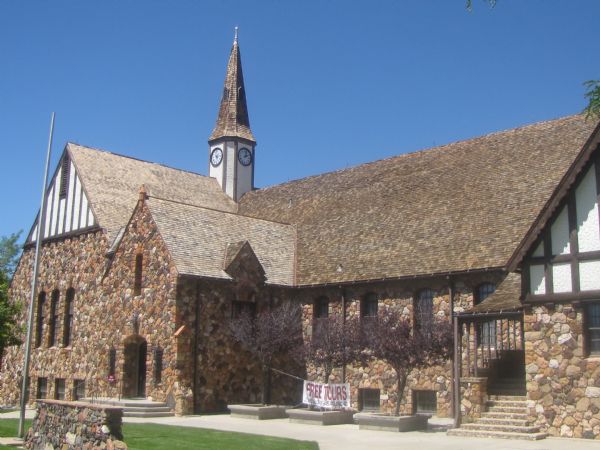Narthex the entrance or lobby area located at the end of the nave that is either an indoor area separated from the nave by a screen or rail or an external structure such as a porch to allow space for those not eligible for admittance into the general congregation.
1930 curch roofs.
And to effectively shed water and snow the shape was likewise a fairly steep pitch.
In period styles of residential and commercial architecture.
Roofs were covered with wood shingles or shakes.
Flat seamed copper was used on many domes and cupolas.
Usages vary slightly from region to region or from one builder or architect to another.
Roof pitch is a measurement of a roof s slope expressed as a ratio.
1930s and 1940s where they evoked thatched roofs fi gure 4.
Whether thatched with heavy marsh grass or covered with hand hewn shingles the underlying support for a roof was a frame of interlocking poles or cut timbers.
Roof shapes differ greatly from region to region.
The main factors which influence the shape of roofs are the climate and the materials available for roof structure and the outer covering.
The period between the wars from approximately 1920 through the 1930s witnessed the birth of a multitude of architectural styles some of which shared a number of design elements.
And nearby parts of canada because of the abundance of slate quarries in the area slate also became popular in the rest of the u s.
Copper with standing seams covered some of the more notable early american roofs including that of christ church 1727 1744 in philadelphia.
Slate has long been a regionally prominent roofing material in the northeastern u s.
Williams slate co c.
The copper sheets were imported from england until the end of the 18th century when facilities for rolling sheet metal were developed in america.
Roof terminology is also not rigidly defined.
Individual shingles fell out of favor as more companies produced strip shingles with or without tabs.
Although there is no single standard roof pitch used on all sloped roofs factors such as roofing materials and local climate help to determine the appropriate range of pitches for a given building.
To accommodate technological advances such as central heating and indoor plumbing building designs captured new ideals in beauty that simultaneously allowed.
With the advance of industrial society into manitoba by the 1870s these basic materials.
Church architecture of england refers to the architecture of buildings of christian churches in england it has evolved over the two thousand years of the christian religion partly by innovation and partly by imitating other architectural styles as well as responding to changing beliefs practices and local traditions.





























